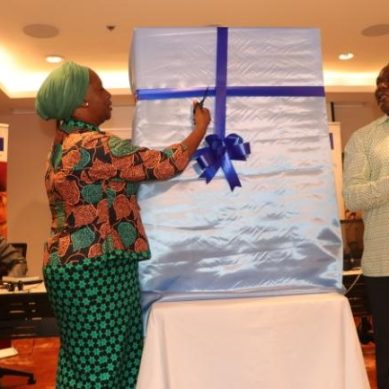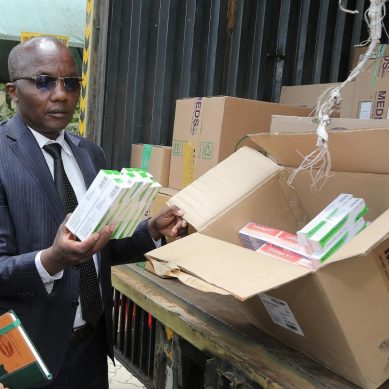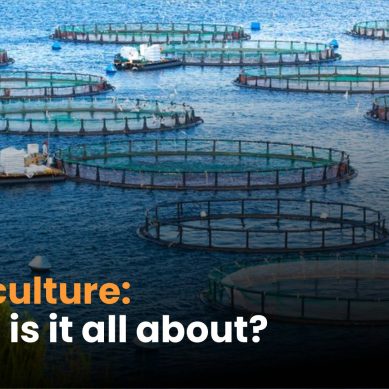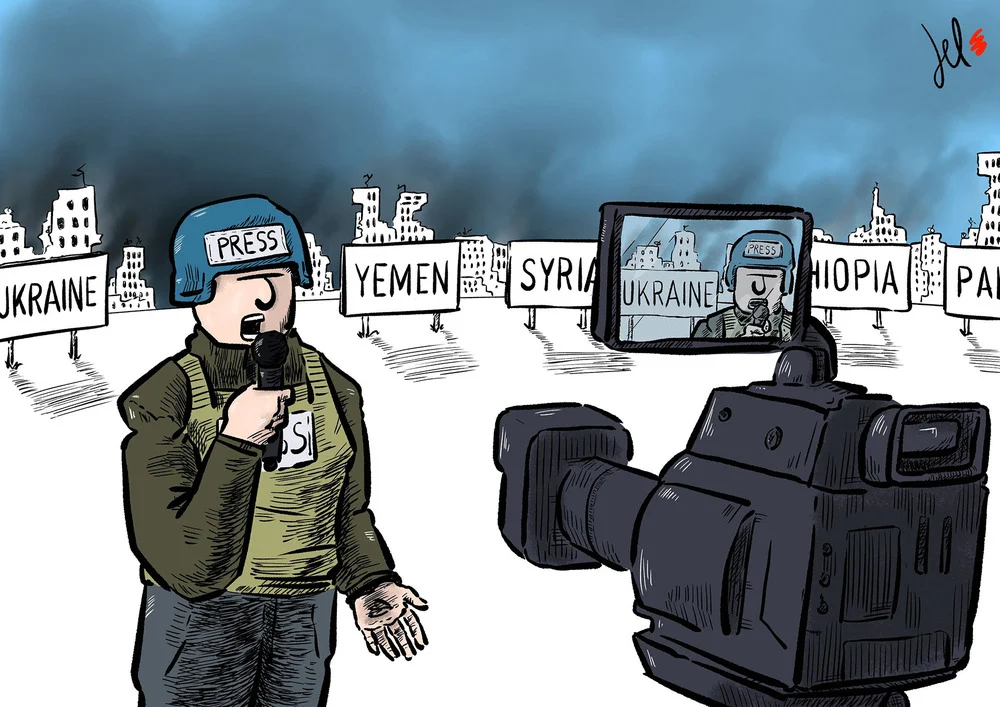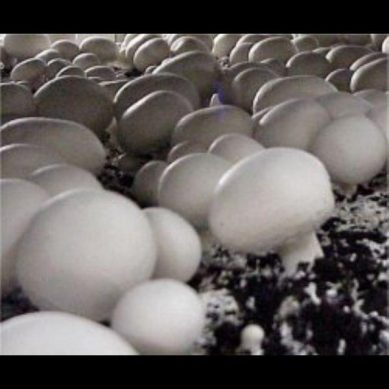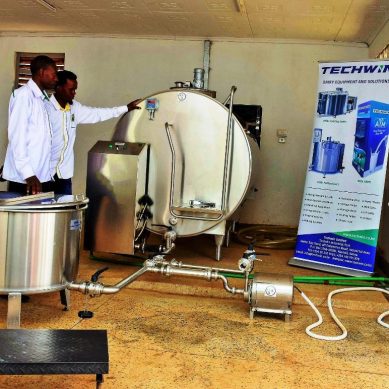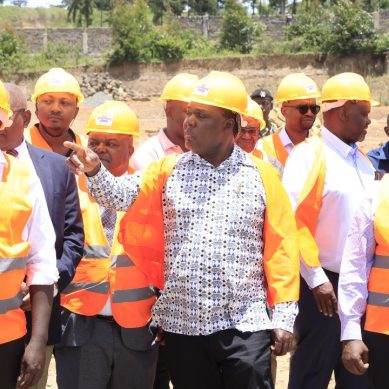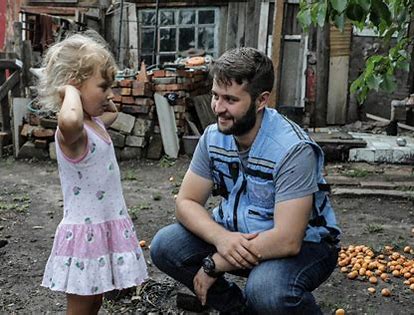
While many people and humanitarian organizations laud the amazing generosity towards Ukraine and its people, some observers are asking why only now, why only for Ukrainians, why not for Ethiopians, for Syrians, for Iraqis, for Palestinians – and claim that it is racism driving the disparity.
“Those critiques [about racism] are well heard,” said Price-Jones. He likened the situation to his time working in Kosovo in the late 1990s – a conflict, also on European soil, that garnered several times more funding than comparable crises at the time. “Those critiques are much louder now,” he reflected.
Others, like Smruti Patel, a coordinator for Alliance for Empowering Partnership (A4EP), a network supporting organisations in the Global South, see a more nuanced picture. “The imbalance with Ukraine is not due to pure racism,” she told The New Humanitarian. “When something is near and you can see and feel it, it has a different way of tugging on your heart than other, more faraway places.”
The warmth of the regional welcome isn’t all that different from what other parts of the world experience, stressed Gabriella Waaijman, Save the Children’s global humanitarian director. “During the war in South Sudan, you saw Uganda and Kenya and other neighbouring countries open their doors and allow millions of people to settle in their countries,” she said. “It’s neighbours responding to the needs of their neighbours.”
However, what did incense Patel was the racism being dished out to people other than Ukrainians showing up at borders. “They were greeted with [violence] instead of open arms,” she said. “That is what strikes most people… as racist.”
The media has also been critiqued for its racist undertones – normalising conflict and brutality in faraway places, especially in African and Middle Eastern countries, while displaying shock and outrage when it happens in Europe.
Given all these concerns, many humanitarians are advocating that whatever is donated towards Ukraine must come on top of what donors will give elsewhere – it mustn’t be diverted from aid funding for existing crises.
ALNAP, an organisation dedicated to learning in the aid sector, said there’s a strong impulse historically among donors and aid groups to divert resources from ongoing lower-profile crises to new high-profile emergencies, often to the detriment of other people equally in need.
Waaijman said Save the Children is already experiencing this funding diversion among its donors: One communicated that their funding for programmes in Venezuela would have to be cut short because they need the money for Ukraine. Others noted the same, but didn’t want to publicise the details for fear of damaging relationships.
“What the children in Ukraine have gone through is horrendous and deserves our support,” said Waaijman. “But there are children in so many other places who have equally gone through hell and survived bombardments and displacements and had to leave everything behind. They deserve our love and solidarity too.”
At the UN pledging event for Ukraine, numerous ministers parroted a consistent message: This will not be diverted from elsewhere; this will be additional funding. This was repeated by European foreign ministers at a humanitarian event in Brussels on Monday. And Jutta Urpilainen, the EU’s commissioner for international partnerships, told journalists in Geneva on Thursday: “I want to pass a message that we have not forgotten the rest of the world.”
“It’s the first time I remember hearing anything like this – so many donors saying the same thing,” Julie Thompson, an official at the UN’s emergency aid coordination body, OCHA, told The New Humanitarian. “It would be dangerous to allow funding for Ukraine to draw away from the high needs overall for this year. It presents a challenge and opportunity for donors to dig deep and find additional resources.”
However, several aid observers reckoned it was inevitable that such high levels of new funding for Ukraine would put a dent in donor appetites elsewhere.
Most donor states set aid budgets at the beginning of the fiscal year, and tap into reserves for unforeseen crises: a rapid escalation of conflict or a sudden onset disaster. Those reserves could be eaten up by Ukraine, and if there’s another emergency later in the year, many observers wondered where that funding would come from, especially given the dire macroeconomic outlook.
“There are children in so many other places who have equally gone through hell and survived bombardments and displacements and had to leave everything behind. They deserve our love and solidarity too.”
And despite the reassurances, Filippo Grandi, the head of the UN’s refugee agency, UNHCR, remains “very worried.” He told the European Humanitarian Forum in Brussels that some states, including European member states, are utilising [Official Development Assistance] to respond to hosting refugees. “Unless we ringfence the resources that are dedicated to responding to crises… in all parts of the world, we risk – once, hopefully, the crisis in Ukraine dies down – … a huge backfire of other crises that have become much worse and even more difficult to address.”
In Ukraine and neighbouring countries, Waaijman wasn’t so worried about the amount of funding – the needs will be high for the foreseeable future – but the time pressure in which to spend the money.
Right now, she said, people coming across the borders are those who can afford to. In a few months time, the people left in Ukraine will be the most vulnerable, and humanitarian access is likely to improve. “So,” she added, “if we spend all our money in the first six months of the response, we’re potentially not spending on the most vulnerable.”
To avoid this imbalance and time crunch in which to spend, aid groups advocate for money to be more flexible, so it can be spent at their discretion – for example on an underfunded crisis or on needs that fall outside a short spending window. However, overall, donors remain reluctant to give unrestricted funds – data from 2020 shows only 17 percent of humanitarian funding to UN organisations was unearmarked.
Many of the big international NGOs (INGOs) and UN agencies are just setting up their operations for Ukraine. Meanwhile, countless local groups are providing aid. Patel urged donors to invest in those local groups – because when attention wanes, as it will, the international groups will inevitably turn elsewhere. “If we put that same investment into local capacity, then the response will be sustained” even when the cameras turn off, she explained.
Most of all, however, aid insiders were concerned about the longer term fallout of the Ukraine conflict on global food insecurity and poverty levels – ripple effects that will make many underfunded humanitarian emergencies even more acute.
“The world is watching,” said Patel. “This is about trust, about seeing a conscious effort to make sure that others have equal resources as well.”
- The New Humanitarian report
While many people and humanitarian organizations laud the amazing generosity towards Ukraine and its people, some observers are asking why only now, why only for Ukrainians, why not for Ethiopians, for Syrians, for Iraqis, for Palestinians – and claim that it is racism driving the disparity.
“Those critiques [about racism] are well heard,” said Price-Jones. He likened the situation to his time working in Kosovo in the late 1990s – a conflict, also on European soil, that garnered several times more funding than comparable crises at the time. “Those critiques are much louder now,” he reflected.
Others, like Smruti Patel, a coordinator for Alliance for Empowering Partnership (A4EP), a network supporting organisations in the Global South, see a more nuanced picture. “The imbalance with Ukraine is not due to pure racism,” she told The New Humanitarian. “When something is near and you can see and feel it, it has a different way of tugging on your heart than other, more faraway places.”
The warmth of the regional welcome isn’t all that different from what other parts of the world experience, stressed Gabriella Waaijman, Save the Children’s global humanitarian director. “During the war in South Sudan, you saw Uganda and Kenya and other neighbouring countries open their doors and allow millions of people to settle in their countries,” she said. “It’s neighbours responding to the needs of their neighbours.”
However, what did incense Patel was the racism being dished out to people other than Ukrainians showing up at borders. “They were greeted with [violence] instead of open arms,” she said. “That is what strikes most people… as racist.”
The media has also been critiqued for its racist undertones – normalising conflict and brutality in faraway places, especially in African and Middle Eastern countries, while displaying shock and outrage when it happens in Europe.
Given all these concerns, many humanitarians are advocating that whatever is donated towards Ukraine must come on top of what donors will give elsewhere – it mustn’t be diverted from aid funding for existing crises.
ALNAP, an organisation dedicated to learning in the aid sector, said there’s a strong impulse historically among donors and aid groups to divert resources from ongoing lower-profile crises to new high-profile emergencies, often to the detriment of other people equally in need.
Waaijman said Save the Children is already experiencing this funding diversion among its donors: One communicated that their funding for programmes in Venezuela would have to be cut short because they need the money for Ukraine. Others noted the same, but didn’t want to publicise the details for fear of damaging relationships.
“What the children in Ukraine have gone through is horrendous and deserves our support,” said Waaijman. “But there are children in so many other places who have equally gone through hell and survived bombardments and displacements and had to leave everything behind. They deserve our love and solidarity too.”
At the UN pledging event for Ukraine, numerous ministers parroted a consistent message: This will not be diverted from elsewhere; this will be additional funding. This was repeated by European foreign ministers at a humanitarian event in Brussels on Monday. And Jutta Urpilainen, the EU’s commissioner for international partnerships, told journalists in Geneva on Thursday: “I want to pass a message that we have not forgotten the rest of the world.”
“It’s the first time I remember hearing anything like this – so many donors saying the same thing,” Julie Thompson, an official at the UN’s emergency aid coordination body, OCHA, told The New Humanitarian. “It would be dangerous to allow funding for Ukraine to draw away from the high needs overall for this year. It presents a challenge and opportunity for donors to dig deep and find additional resources.”
However, several aid observers reckoned it was inevitable that such high levels of new funding for Ukraine would put a dent in donor appetites elsewhere.
Most donor states set aid budgets at the beginning of the fiscal year, and tap into reserves for unforeseen crises: a rapid escalation of conflict or a sudden onset disaster. Those reserves could be eaten up by Ukraine, and if there’s another emergency later in the year, many observers wondered where that funding would come from, especially given the dire macroeconomic outlook.
“There are children in so many other places who have equally gone through hell and survived bombardments and displacements and had to leave everything behind. They deserve our love and solidarity too.”
And despite the reassurances, Filippo Grandi, the head of the UN’s refugee agency, UNHCR, remains “very worried.” He told the European Humanitarian Forum in Brussels that some states, including European member states, are utilising [Official Development Assistance] to respond to hosting refugees. “Unless we ringfence the resources that are dedicated to responding to crises… in all parts of the world, we risk – once, hopefully, the crisis in Ukraine dies down – … a huge backfire of other crises that have become much worse and even more difficult to address.”
In Ukraine and neighbouring countries, Waaijman wasn’t so worried about the amount of funding – the needs will be high for the foreseeable future – but the time pressure in which to spend the money.
Right now, she said, people coming across the borders are those who can afford to. In a few months time, the people left in Ukraine will be the most vulnerable, and humanitarian access is likely to improve. “So,” she added, “if we spend all our money in the first six months of the response, we’re potentially not spending on the most vulnerable.”
To avoid this imbalance and time crunch in which to spend, aid groups advocate for money to be more flexible, so it can be spent at their discretion – for example on an underfunded crisis or on needs that fall outside a short spending window. However, overall, donors remain reluctant to give unrestricted funds – data from 2020 shows only 17 percent of humanitarian funding to UN organisations was unearmarked.
Many of the big international NGOs (INGOs) and UN agencies are just setting up their operations for Ukraine. Meanwhile, countless local groups are providing aid. Patel urged donors to invest in those local groups – because when attention wanes, as it will, the international groups will inevitably turn elsewhere. “If we put that same investment into local capacity, then the response will be sustained” even when the cameras turn off, she explained.
Most of all, however, aid insiders were concerned about the longer term fallout of the Ukraine conflict on global food insecurity and poverty levels – ripple effects that will make many underfunded humanitarian emergencies even more acute.
“The world is watching,” said Patel. “This is about trust, about seeing a conscious effort to make sure that others have equal resources as well.”
- The New Humanitarian report
